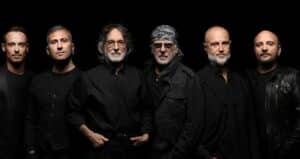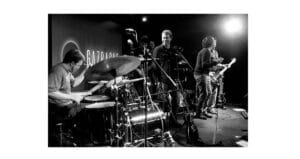Magnum: Melodic Hard Rock and Progressive Rock Pioneers
Magnum is a British rock band that has been a fixture in the melodic hard rock and progressive rock scenes since the 1970s. Known for their epic soundscapes, orchestrated arrangements, and powerful vocals, Magnum has garnered a loyal following for their ability to combine melodic rock with elements of progressive rock and arena rock. Their albums are often characterized by grandiose themes, anthemic choruses, and a mix of light and heavy instrumentation.
1. Formation and Early Years
1.1 The Formation of Magnum
- Magnum was formed in 1972 in Birmingham, England. The band was originally founded by Tony Clarkin (guitarist) and Bob Catley (vocalist). Over the years, the band lineup shifted, but Clarkin and Catley remained the core members, helping to shape Magnum’s distinctive sound.
- Magnum’s early music drew from a variety of influences, including progressive rock, hard rock, and classic rock bands like Deep Purple and Uriah Heep, but it was their ability to blend these elements with melodic AOR (album-oriented rock) that set them apart.
1.2 First Releases and Breakthrough (1978-1982)
- Magnum’s first album, Magnum (1978), was a blend of progressive rock and hard rock, featuring orchestral elements and thoughtful songwriting.
- The band’s breakthrough came in 1982 with their album The Eleventh Hour, which started to define their signature sound: epic and melodic rock with a focus on powerful storytelling and cinematic arrangements.
2. Magnum’s Musical Evolution
2.1 The Grand Sound of the 1980s
- Magnum’s music in the 1980s was often noted for its grandiose sound, with lush keyboards, dramatic guitar work, and anthemic choruses. During this period, they became known for their cinematic rock operas and theatrical stage presence.
2.2 Key Albums: The 1980s
- Chase the Dragon (1982) is considered one of Magnum’s defining albums. Featuring a mix of melodic hard rock and progressive rock elements, the album includes some of the band’s most well-known tracks like The Spirit and Soldier of the Line. The album helped establish Magnum as a major player in the rock scene.
- On a Storyteller’s Night (1985) is another fan favorite, widely regarded as Magnum’s best album by many. It features powerful storytelling, with a mix of soaring ballads and hard-hitting rock anthems. The album includes hits like Just Like an Arrow and How Far Jerusalem.
3. The Magnum Sound: Melodic Rock Meets Progressive Elements
3.1 Melodic Hard Rock
- Magnum’s style is often categorized as melodic hard rock, combining catchy melodies and hard-hitting guitar riffs with thoughtful lyrics and epic arrangements. The band is known for their ability to craft songs that are both commercially accessible and musically sophisticated, with strong hooks and anthemic choruses.
3.2 Progressive Rock Influences
- Magnum also drew on progressive rock influences, incorporating elements like orchestral arrangements, complex time signatures, and extended instrumental sections. This blend of hard rock and progressive rock was central to their identity, especially on their early albums.
3.3 Key Themes and Lyrics
- Magnum’s music is often thematically rich, with lyrics focusing on epic storytelling, fantasy elements, and personal reflection. Their songs often evoke cinematic imagery, creating vivid landscapes and emotional journeys.
4. Notable Albums and Tracks
4.1 The Eleventh Hour (1982)
- The Eleventh Hour marked a shift in the band’s style, combining hard rock with progressive rock elements and a focus on melodic songs with orchestral overtones.
- Key Tracks:
- The Spirit (a powerful anthem with dramatic lyrics),
- Soldier of the Line (a hard-hitting rock track).
4.2 Chase the Dragon (1982)
- Chase the Dragon is one of Magnum’s most celebrated albums, with its blend of epic arrangements and hard rock energy.
- Key Tracks:
- The Spirit (a symphonic rock track that became a classic),
- Soldier of the Line (combining hard rock with melodic balladry).
4.3 On a Storyteller’s Night (1985)
- On a Storyteller’s Night is Magnum’s magnum opus for many fans. The album captures the band’s ability to balance epic storytelling with melodic rock.
- Key Tracks:
- Just Like an Arrow (a soaring ballad),
- How Far Jerusalem (a rock anthem with strong lyrics and instrumentation).
4.4 Vigilante (1986)
- Vigilante continued the band’s success with a mix of melodic rock and cinematic flair, maintaining their popularity during the mid-1980s.
- Key Tracks:
- Vigilante (the title track is a hard-hitting anthem),
- Running Wild (a memorable, mid-tempo track).
4.5 Kingdom of Madness (1978)
- Magnum’s debut album Kingdom of Madness is filled with progressive rock tendencies, making it one of the band’s more complex early works.
- Key Tracks:
- Kingdom of Madness (the opening track sets the tone for the band’s future style),
- The Battle (a heavy, atmospheric piece).
5. Magnum’s Impact and Legacy
5.1 Longstanding Career and Resilience
- Magnum’s music has consistently been both critically acclaimed and popular among fans, even though the band did not always enjoy the mainstream success of some of their contemporaries. Over the years, they have continued to release albums that reflect their ability to evolve while staying true to their musical roots.
- Their resilience and the devotion of their fanbase have kept them active for over four decades, making them one of the most enduring bands in melodic hard rock and progressive rock.
5.2 Influence on Other Bands
- Magnum’s use of cinematic storytelling and melodic hooks has influenced a wide range of rock bands, particularly those within the melodic rock and AOR genres. Their sound has also inspired more progressive bands who value theatricality and musical complexity.
6. Key Members of Magnum
6.1 Tony Clarkin (Guitar)
- Tony Clarkin has been the consistent driving force behind Magnum’s musical direction. His songwriting and guitar work have shaped the band’s signature sound, blending melodic hooks with epic arrangements.
6.2 Bob Catley (Vocals)
- Bob Catley’s distinctive, powerful voice has been an integral part of Magnum’s sound. His soaring vocals and ability to deliver emotional performances have made him a standout figure in the melodic rock scene.
6.3 Other Notable Members
- Mark Stanway (keyboards) was a long-time member who contributed to the band’s orchestral and progressive elements.
- Al Barrow (bass) and Harry James (drums) are key members in the more recent lineup, maintaining the band’s distinctive rhythm section.
7. Fascinating Facts About Magnum
- Concept Albums: Magnum is known for their concept albums and thematic storytelling, with many of their works creating vivid narratives around fantasy, history, and personal reflection.
- Longevity: Despite facing lineup changes and challenges in the music industry, Magnum has maintained a loyal following and continues to release new music and tour.
8. Magnum’s Discography Overview
Studio Albums
- Kingdom of Madness (1978)
- Magnum II (1979)
- Chase the Dragon (1982)
- The Eleventh Hour (1983)
- On a Storyteller’s Night (1985)
- Vigilante (1986)
- The Princess and the Peasant (1987)
- Wings of Heaven (1988)
- Sleepwalking (1992)
- Brand New Morning (2004)
- The Visitation (2011)
- Sacred Blood “Divine” Lies (2016)
Live Albums
- Live at the Symphony Hall (1990)
- Mörbisch – The Kingdom of Madness (2014)
9. Why Magnum Matters
Magnum’s combination of melodic rock and progressive elements has kept them relevant in the rock scene for over 40 years. With their grandiose compositions, cinematic storytelling, and powerful performances, Magnum has carved a niche as one of the most respected and enduring bands in melodic hard rock and progressive rock. Their ability to balance accessible rock with musical sophistication ensures that their legacy will continue to inspire future generations.




